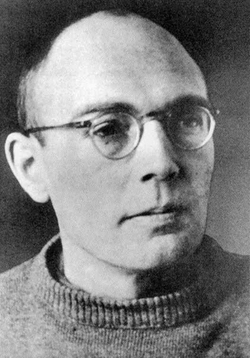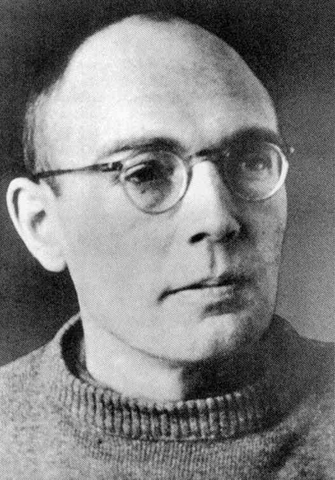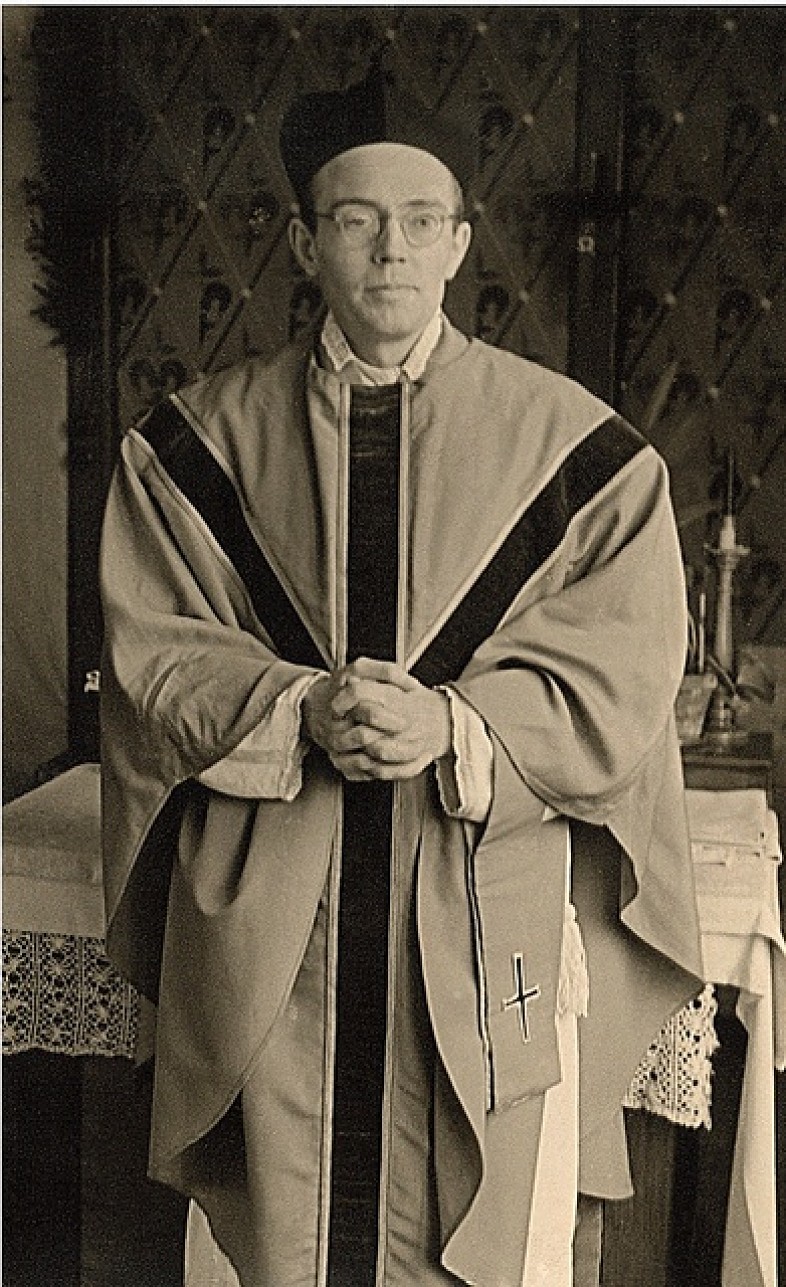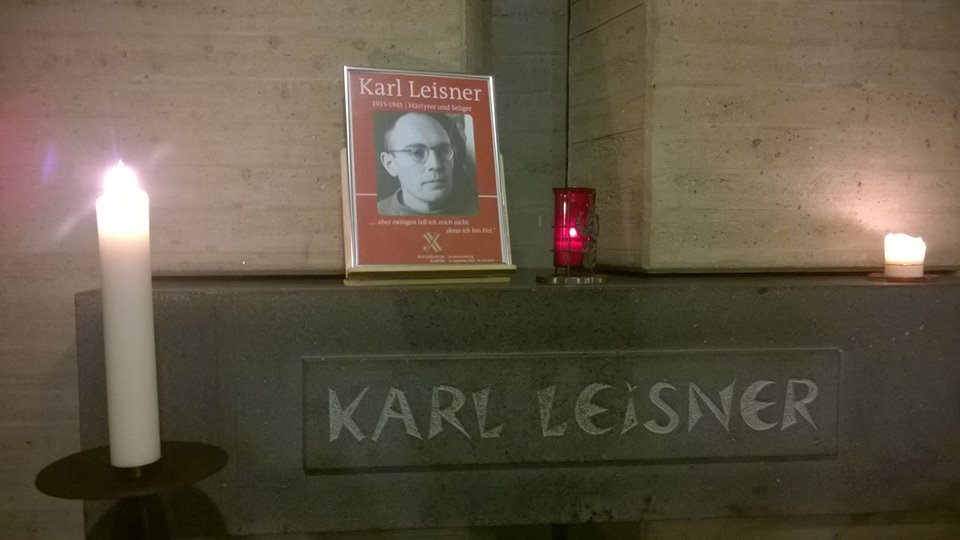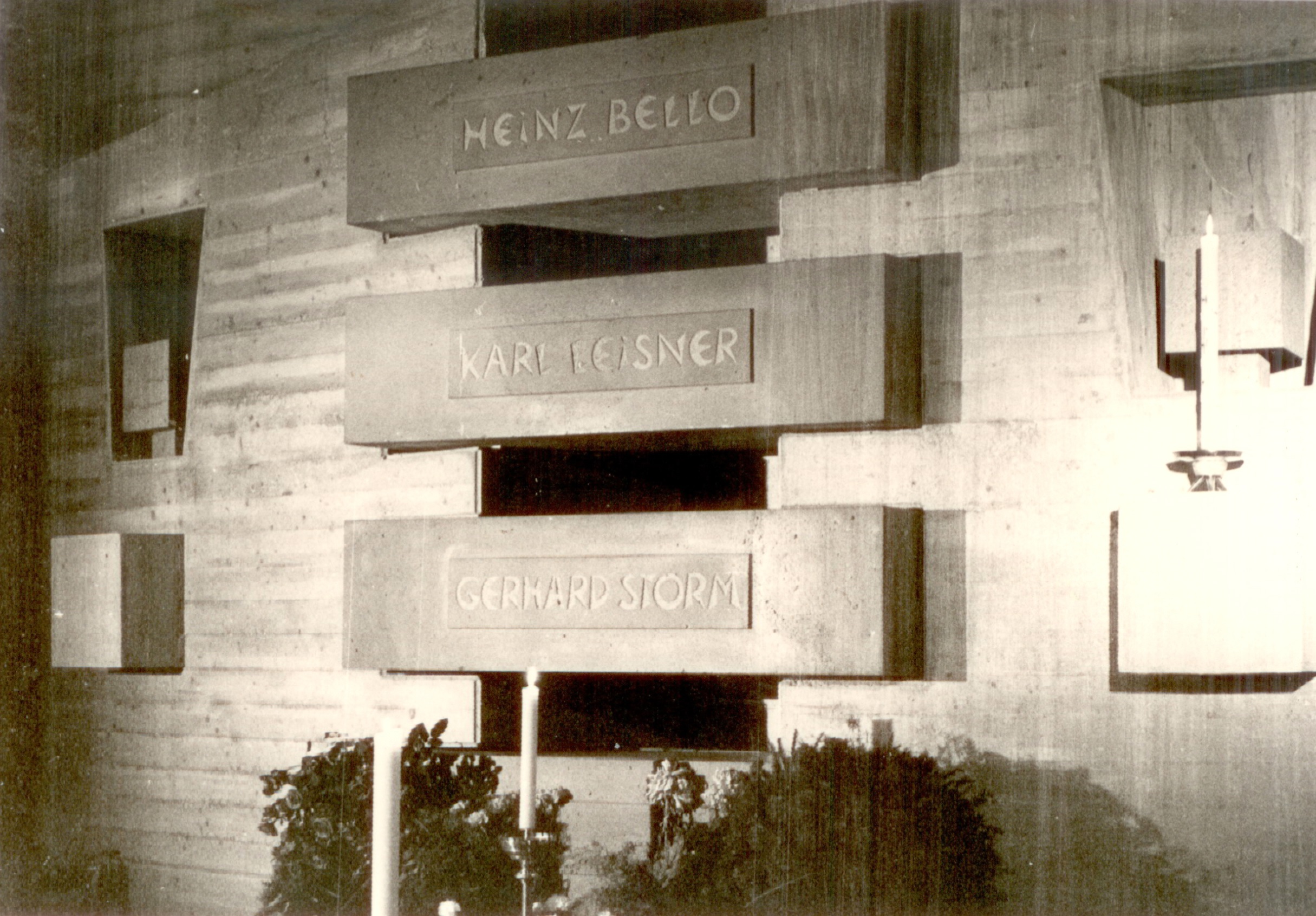Karl Leisner was born in Rees and moved with his family to Kleve when he was six years old. He attended school and completed his college-preparatory school in 1934. He studied theology in Münster, where he founded illegal youth groups to resist the Nazis. With these groups he travelled to the Benelux countries to have camps outside of Nazi control. He was also named official diocesan youth leader by Bishop Clemens August von Galen in the same year. When forced to become a worker under the Third Reich, he organized Masses for himself and the other workers. His home and papers were searched by the Gestapo.
On March 25, 1939, Galen ordained him deacon. Due to his criticism of Adolf Hitler, he was arrested on November 9, 1939, by the Gestapo while on a vacation in St. Blasien for his health. He was imprisoned in the Sachsenhausen concentration camp initially, but was moved to the Dachau concentration camp on December 14, 1941. (Most Catholic prisoners were kept in that camp.) On December 17, 1944, a fellow prisoner, French Bishop Gabriel Piguet, ordained him a priest. At the time, Leisner was already suffering from the tuberculosis that would later claim his life. The newly ordained priest only celebrated a single Mass. When Dachau was liberated on May 4, 1945, Leisner was taken to the tuberculosis hospital in Planegg near Munich. He died there a few months later, on August 12, 1945. Leisner's body was taken to Kleve and buried in the cemetery on August 20, 1945.
In 1966 his remains were exhumed and reinterred in the crypt of Xanten Cathedral.
Beatification
On a visit to Berlin in 1996, Pope St. John Paul II recognized Leisner as a martyr for the Catholic faith and beatified him, together with Bernhard Lichtenberg, another Nazi resister. His feast day is on August 12.
His canonization process has not yet been completed. The postulator can be reached at Karl-Leisner-Kreis e.V. Kleve, Leitgraben 26, 47533 Kleve-Kellen, Germany.
Karl Leisner was born in Rees and moved with his family to Kleve when he was six years old. He attended school and completed his college-preparatory school in 1934. He studied theology in Münster, where he founded illegal youth groups to resist the Nazis. With these groups he travelled to the Benelux countries to have camps outside of Nazi control. He was also named official diocesan youth leader by Bishop Clemens August von Galen in the same year. When forced to become a worker under the Third Reich, he organized Masses for himself and the other workers. His home and papers were searched by the Gestapo.
On March 25, 1939, Galen ordained him deacon. Due to his criticism of Adolf Hitler, he was arrested on November 9, 1939, by the Gestapo while on a vacation in St. Blasien for his health. He was imprisoned in the Sachsenhausen concentration camp initially, but was moved to the Dachau concentration camp on December 14, 1941. (Most Catholic prisoners were kept in that camp.) On December 17, 1944, a fellow prisoner, French Bishop Gabriel Piguet, ordained him a priest. At the time, Leisner was already suffering from the tuberculosis that would later claim his life. The newly ordained priest only celebrated a single Mass. When Dachau was liberated on May 4, 1945, Leisner was taken to the tuberculosis hospital in Planegg near Munich. He died there a few months later, on August 12, 1945. Leisner's body was taken to Kleve and buried in the cemetery on August 20, 1945.
In 1966 his remains were exhumed and reinterred in the crypt of Xanten Cathedral.
Beatification
On a visit to Berlin in 1996, Pope St. John Paul II recognized Leisner as a martyr for the Catholic faith and beatified him, together with Bernhard Lichtenberg, another Nazi resister. His feast day is on August 12.
His canonization process has not yet been completed. The postulator can be reached at Karl-Leisner-Kreis e.V. Kleve, Leitgraben 26, 47533 Kleve-Kellen, Germany.
Sponsored by Ancestry
Advertisement
Explore more
Sponsored by Ancestry
Advertisement
